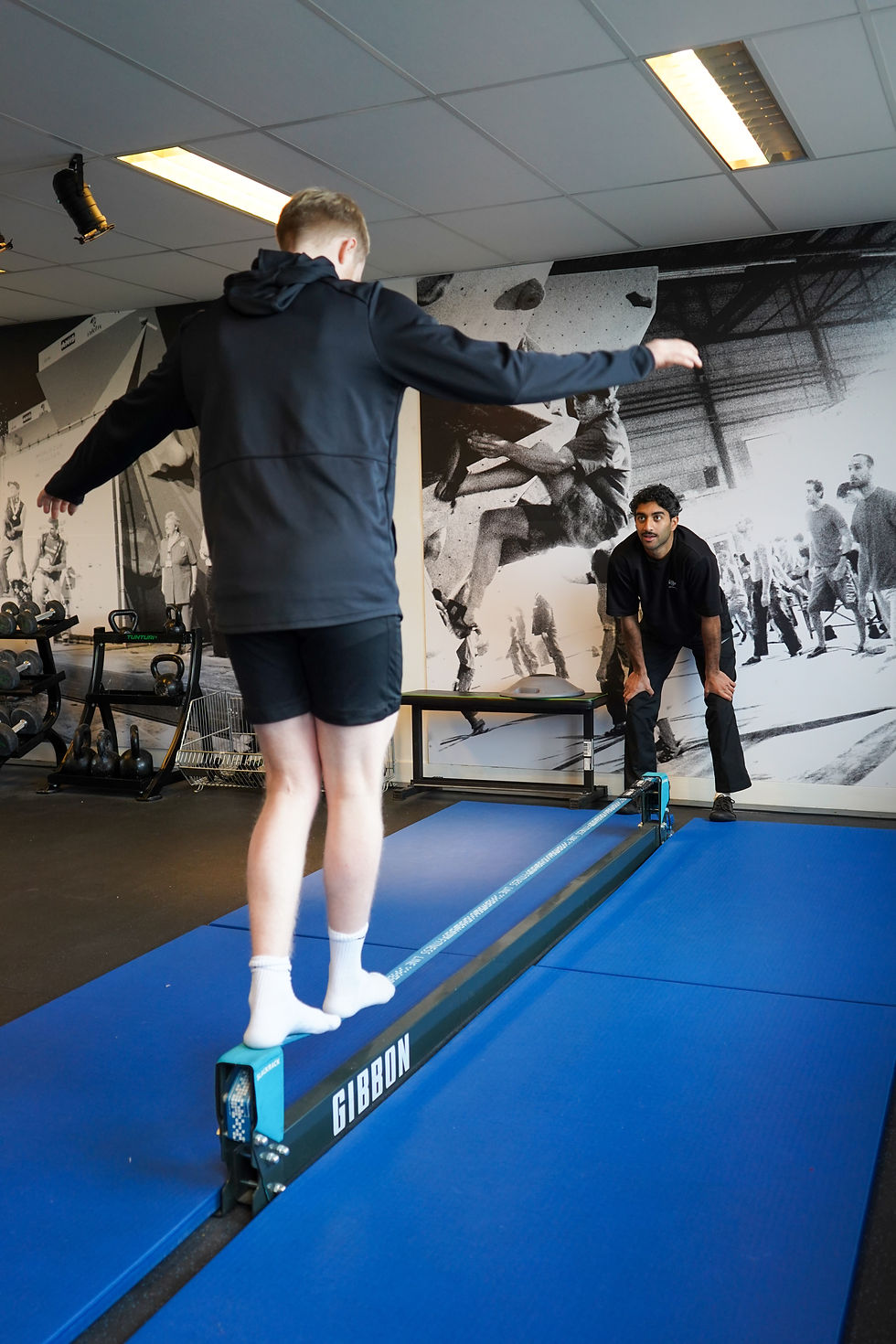⛹🏽♂️ The Deep Physio Guide for Sport-Specific Training for Hamstring Injury Recovery ⛹🏽♂️
- pradeepmathews1
- Nov 2, 2023
- 2 min read
Hamstring injuries are common among athletes, especially those who participate in sports that require explosive movements, such as sprinting, soccer, and basketball. These injuries can be debilitating and often lead to prolonged recovery periods if not managed appropriately. Sport-specific training for hamstring injury recovery is crucial to ensure that athletes can return to their sport with reduced risk of re-injury and improved performance.
Understanding Hamstring Injuries
Before delving into the specifics of sport-specific training, it's essential to understand the nature of hamstring injuries. Hamstring injuries typically involve a strain to one or more of the three muscles at the back of the thigh. These injuries are categorised into three grades based on severity, with

grade 1 being a mild strain and grade 3 representing a complete tear. Recovery time varies depending on the grade of the injury and the individual's rehabilitation process. As therapists it is also our duty to motivate the patient to put their bodies into the best position to allow healing to occur.
The Role of Sport-Specific Training
Sport-specific training is a critical component of hamstring injury recovery, as it addresses the unique demands of the athlete's sport and helps them regain functional strength, mobility, and agility specific to their activity. I find that this also adds a level of "fun" to the training which is a common under appreciated component to training.
Key Components of Sport-Specific Training
a. Eccentric Strengthening: Eccentric exercises, such as the Nordic hamstring curl (often considered the "gold standard"), are particularly beneficial for hamstring injury recovery. They help improve the muscle's ability to absorb and dissipate force during high-speed movements common in sports like soccer and sprinting. These exercises also train the muscle throughout its entire length ⭐️
b. Agility Drills: Athletes often need to change direction rapidly during sports activities. Incorporating agility drills into rehabilitation helps athletes regain their ability to pivot and change direction while maintaining control.
c. Plyometrics: Plyometric exercises, like box jumps and bounding, enhance explosive power, which is crucial in sports that require quick bursts of speed and acceleration.
d. Sport-Specific Movements: Tailoring rehabilitation exercises to mimic the movements and demands of the athlete's sport is essential. For example, a soccer player may need to work on kicking, dribbling, and quick changes of direction.
Conclusion
It's important to remember that sport-specific training for hamstring injury recovery should be implemented gradually. Athletes should not rush back to their sport without ensuring that they have regained sufficient strength and flexibility to prevent re-injury. Collaborating with a sports physiotherapist (like US at Deep Physio) or trainer who understands the specific demands of the sport can be invaluable in designing a structured rehabilitation plan.
References:
Askling, C. M., Tengvar, M., & Thorstensson, A. (2013). Acute hamstring injuries in Swedish elite sprinters and jumpers: a prospective randomised controlled clinical trial comparing two rehabilitation protocols. British Journal of Sports Medicine, 47(15), 953-959.
Heiderscheit, B. C., Sherry, M. A., Silder, A., Chumanov, E. S., & Thelen, D. G. (2010). Hamstring strain injuries: recommendations for diagnosis, rehabilitation, and injury prevention. Journal of Orthopaedic & Sports Physical Therapy, 40(2), 67-81.

コメント